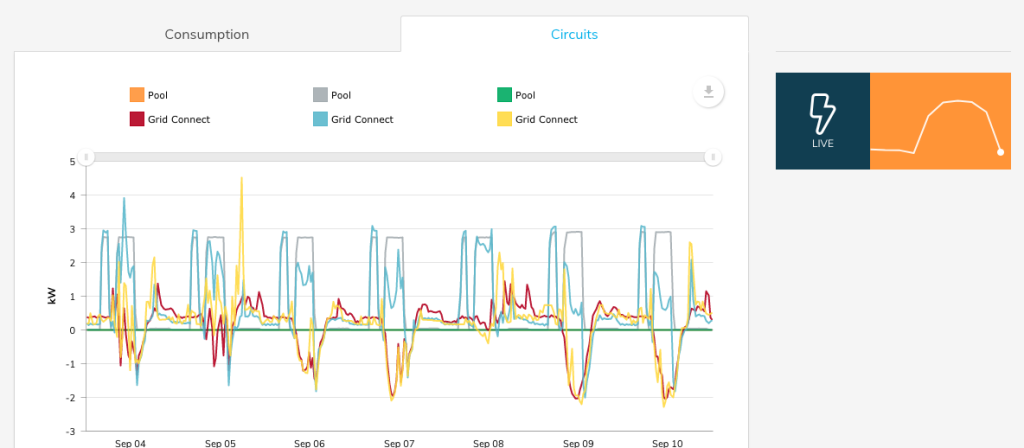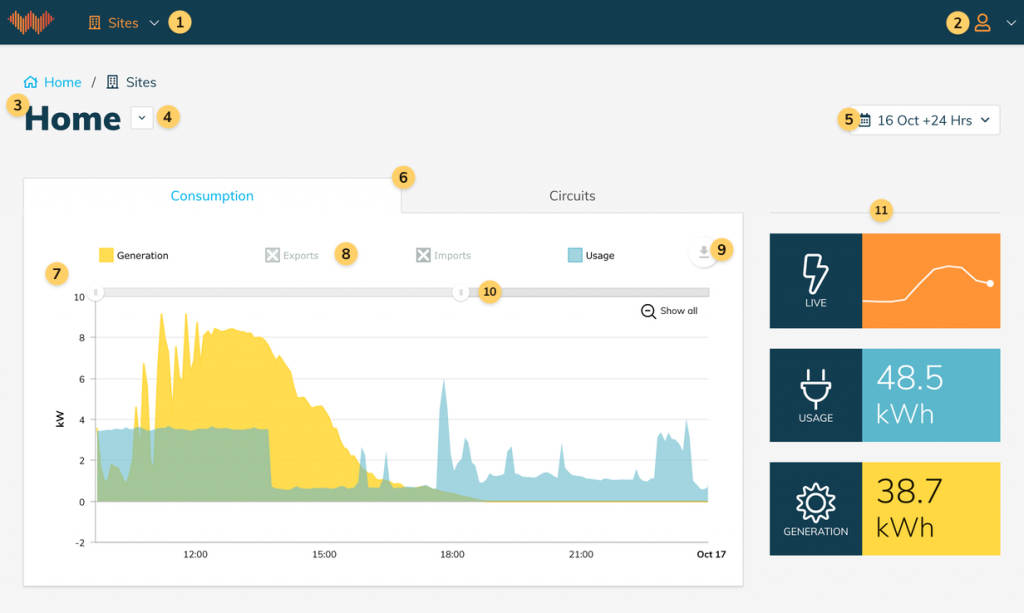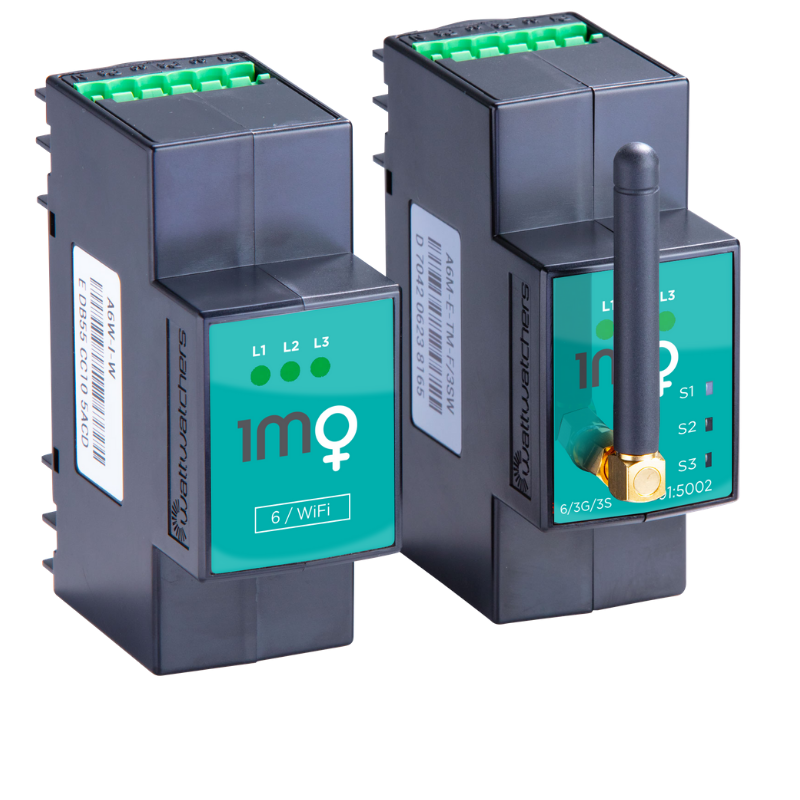pv magazine Australia: Wattwatchers gets behind the meter to what your team has called “the holy grail of energy management”. What is it that Wattwatchers technology does?
Gavin Dietz: The simple answer is that Wattwatchers puts electrical circuits on the internet in real-time. Those circuits can be whatever the home or business consumer wants to see, and in some cases remotely control, including the main grid connection, solar generation and major loads like air-conditioning, pumps, EV chargers and electric hot water.
These days, as 21st century consumers, we pretty much expect that all of the services in our daily lives will be available and transacted through the internet, but that hasn’t really been the case with energy. The ‘real-time’ part is especially important. People can’t manage how they use electricity from quarterly or monthly bills, in arrears, or even from retailer portals showing smart meter data that is typically two to five days old before they see it, and only shows solar generation if it is exported to the grid rather than consumed on-site.
Consumers with solar PV – Australia now has more than two million of them – are especially disadvantaged by a lack of comprehensive real-time data to support optimising their rooftop investments. The good news, however, is that they can be especially advantaged by seeing all of their data ‘right now’ if they use it to maximise their on-site consumption of lower-cost solar, and minimise importing more expensive electrons from the grid.

Why is it important that the data provided by a Wattwatchers Auditor is the consumer’s data?
If Facebook or Google were starting up today, they’d face vastly greater and better informed scrutiny in regard to how they collect, manage and, frankly, exploit people’s data. We can all see the pushback they are facing in Australia and around the world in recent times, which is leading to real change in how the system thinks about consumer data.
This is now being given policy teeth in the shape of the General Data Protection Regulation (GDPR) in Europe, and also the evolution of Consumer Data Rights (CDR) here in Australia, which includes energy as well as financial and health data. Both the trend and the fundamental ethics are clear and inevitable. Consumers own their data, because it relates to their lives and they pay for the services that create it, and they need to be provided with the right tools so that they can control their data in practice and not just own it in theory.
We shouldn’t assume, however, that these consumer rights are only about privacy and security of data. If consumers truly own their data, this also hands them the keys to unlock its value for themselves, the energy system and the wider economy. Crucially, when they share their data for the benefit of others, and allow third parties to add more value to it, then they should be rewarded. Recognising, enabling and rewarding consumer rights are critical to creating a successful future grid with high penetration of distributed energy resources (DER).
Why is real-time data so important, say, from a customer’s solar PV installation?
We still keep hearing about people who invest in rooftop solar, then see their electricity bills stay higher than they expect, or even rise. They think you just stick solar on the roof and that’s it, that the savings just flow whenever the sun is shining. I know this script, because it happened to me and is actually how I first got to meet Wattwatchers. The first quarterly power bill I received after building a new home with 10 kW of solar PV on the roof was over $1500, which shocked me.
I discovered Wattwatchers through a smart energy program my local council was running. By getting real-time data for my whole home, showing anything imported from the grid or exported to it, plus my solar generation, I could see self-consumption for my household, including monitoring individual loads like my pool pump, air-conditioning and oven. All of this data empowered me with the information and insights I needed to optimise my PV system, by moving suitable loads under my daily solar curve. My bills now average around $200 a month rather than $500, and at that rate I can’t really justify investing in a battery system because the payback just isn’t there.
What is the role data will play in the ongoing energy transition?
Within five to ten years, there will be vast amounts of energy data available through the internet. Smart meter data from utilities may be the dominant form of energy data today, but in the future that Wattwatchers sees, smart meter data will only be a fraction of all the energy-related data that will exist. Far more will come from an array of other meters and sensors, including Wattwatchers, but also inverters, IoT devices, smart EV chargers, intelligent appliances and so on. There will need to be a marketplace for energy data that operates alongside the marketplace for electrons, and as the owners of much of this data, consumers will need to be recognised and enabled to participate in this dual marketplace, then get rewarded for their contributions.
In a sense, Wattwatchers plays part of what the naturalist does, or at least some of the naturalist’s field notes, to what has been called the “technology ecosystem”. What role will Wattwatchers play in the Internet of Things for Energy?
Thanks, that’s a very big question. To be honest I don’t know the full set of answers, but I don’t think that anyone else does either. At Wattwatchers we are constantly talking to people who believe they can already see how the future unfolds for the energy transition, and that in a pure technology sense we already know the main pieces – like renewables, battery storage systems and electric vehicles – and just need to establish the techno-business models such as virtual power plants and demand response orchestration and/or optimisation. I am nowhere near so confident that we have all the answers yet. I expect there will be a lot of wrong turns, dead ends and false dawns. Things that we think look like solutions now simply won’t pan out. Other things that we haven’t even thought of yet will reveal themselves to us.
The only part of the ultimate solution that I have full confidence in is the power of data. Without enormous amounts of data, and I mean highly-granular real-time data and historical data, the vision of a clean, distributed, affordable energy future cannot be achieved. Wattwatchers is basic infrastructure for the Internet of Things for Energy because our kind of data streams are its feedstock.
Can you take me through the Wattwatchers tech in more detail?
With rooftop solar PV the Wattwatchers value-add is simple. We have a six-channel device that operates and communicates independently of the utility meter and the proprietary solar inverter, yet delivers the required grid import/export data and solar generation data to the cloud in real-time. From that you know self-consumption as well as gross generation and any export to the grid, and this empowers the consumer to optimise their solar.
With the exception of anyone who is still enjoying one of those old-style gross feed-in tariffs that the state governments were lavishing on people years ago, the key to optimising solar investments is to self-consume as much of your own generation as possible and minimise any imports from the grid. For many households, and also businesses, if they use data to get this balance right, they’ll never need to spend a small fortune more on home energy storage systems; and for those who can get a good payback on investing in batteries, data will be crucial to right-sizing their systems and locking in a good return on investment.

Wattwatchers works with great partners that take the data from our devices and turn it into services that add extra value for their end customers, including Solar Analytics for solar performance monitoring, Solar Schools for combining energy and education, and Evergen for solar+storage systems with additional ‘energy intelligence’ via its CSIRO-developed algorithms.
Australia, and other parts of the globe, are facing the hard problem of dynamic integration in the energy transition – of which voltage fluctuations plays a role. Does Wattwatchers play a role here?
Voltage fluctuations may yet become a major consumer issue. Traditionally consumers have mainly only thought about whether they have power, which means ‘the lights are on’, or if they are ‘blacked out’. Increasingly, Wattwatchers thinks that people will become more conscious of issues surrounding the ‘quality’ of the electricity product that they are receiving.
Typically, when utility smart meters measure voltage, this data is not made available to consumers. Wattwatchers devices measure voltage and we are delighted to see this data being shared widely and used to put consumer pressure on the electricity distribution system to make sure it delivers a ‘quality product’, which includes limiting voltage fluctuations. Why is this important for end consumers? Today’s homes are full of expensive, and often quite sensitive electronic equipment and appliances, and high voltage spikes can be especially damaging to these technologies. High voltage spikes also can knock solar inverters offline, which means loss of generation and value. Low voltage, meanwhile, can cause appliances to stop working. I know, it happened to me, and my Wattwatchers monitoring allowed me to diagnose the problem on one phase of a three-phase circuit, and then alert the network company to a problem with their street-level transformer.
Wattwatchers is involved in many partnered projects, such as the Collaborative Research Centre Project (CRC-P) with Solar Analytics, Energy Queensland, SAPN and UNSW. What is the aim of this project?
Because of the world record uptake of rooftop solar, now installed in over 20% of all homes, Australia has become a global testbed for the rollout of DERs, and, hopefully, their successful integration with traditional electricity grids. This CRC-P is led by our longstanding partner Solar Analytics, which white-labels Wattwatchers-made devices as its ‘Solar Smart Monitors’. The CRC-P aims to increase the positive impact of the solar revolution by using data, and software and hardware technologies, to maximise the benefit of clean energy generated from the sun by consumers themselves.
 Wattwatchers is involved in another partnered project with Solar Analytics, AEMO, and with funding support from ARENA’s Distributed Energy Resources (DER) competitive round, the project focuses on capturing extra data from Wattwatchers devices? How is this done and what is the project’s aim?
Wattwatchers is involved in another partnered project with Solar Analytics, AEMO, and with funding support from ARENA’s Distributed Energy Resources (DER) competitive round, the project focuses on capturing extra data from Wattwatchers devices? How is this done and what is the project’s aim?
Our devices already have the capability to sample key data points like voltage and frequency at sub-second levels, circa 250 milliseconds. Getting access to this data is expected to be of high value to AEMO and network businesses to run electricity systems with high levels of DER penetration. But as things stand, we can’t record or report readings at this level because of limited processing power onboard our ultra-compact devices. This project, which is focused on voltage, is exploring how we might enable reliable access to these sub-second measurements through firmware and/or hardware changes to Wattwatchers devices.
What is on the horizon as we transition to renewable energy? What excites you?
I’m fully signed up for an intelligent, clean, distributed energy future. Realistically, however, I know coal and gas will still be around for a long time yet, so I’m passionate about energy efficiency whatever the generation source. The fastest, lowest-cost path through the great energy transition combines the benefits of efficiency and renewables. They are better together. But what really excites me is empowering consumers so that they take control of their participation in our electricity systems through data-driven buying power. It’s a people power thing, with the power coming from putting the energy data in the hands of the people.
What’s next?
We become profitable. Energy technology companies like Wattwatchers get a period of startup grace while we establish our products, but we can’t expect investors and grant makers to have endless patience in waiting for outcomes. We need to show tangible results. We need to deliver a pay day. Then keep delivering them and grow.
This content is protected by copyright and may not be reused. If you want to cooperate with us and would like to reuse some of our content, please contact: editors@pv-magazine.com.









By submitting this form you agree to pv magazine using your data for the purposes of publishing your comment.
Your personal data will only be disclosed or otherwise transmitted to third parties for the purposes of spam filtering or if this is necessary for technical maintenance of the website. Any other transfer to third parties will not take place unless this is justified on the basis of applicable data protection regulations or if pv magazine is legally obliged to do so.
You may revoke this consent at any time with effect for the future, in which case your personal data will be deleted immediately. Otherwise, your data will be deleted if pv magazine has processed your request or the purpose of data storage is fulfilled.
Further information on data privacy can be found in our Data Protection Policy.